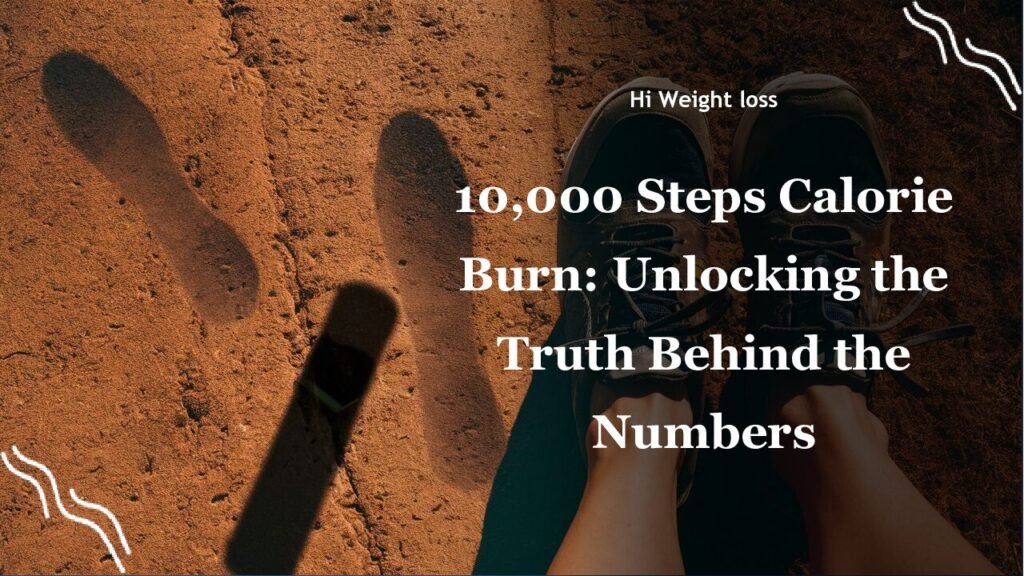“`
Have you ever wondered how many calories you torch while hitting that 10,000-step goal? It’s a common question, and it’s easy to get lost in the varying estimates floating around, leaving you unsure if all that walking is really making a difference. This article will clarify just how many calories you can expect to burn by walking 10,000 steps, explain what impacts that number, and provide some real-world insights to help you on your fitness journey.
How Many Calories Do 10,000 Steps Burn?
The Calorie Burn Basics
The simple truth is that the calories you burn from walking 10,000 steps aren’t set in stone. It’s not like there’s a magic number everyone hits. Instead, it’s influenced by a few key factors, primarily your weight, walking speed, and the intensity of your walk. Think of it like this: a heavier person will naturally expend more energy (and burn more calories) walking the same distance as someone lighter.
For most individuals, a good estimate for walking 10,000 steps at a normal pace is somewhere between 300 to 500 calories. However, this can shift up or down based on your personal stats and the type of walk you are doing. I remember when I first started trying to be more active; I was so focused on the 10,000-step goal, but I didn’t realize how the speed and intensity were also major factors. So, I decided to track more closely to better understand.
Weight Matters: How Your Body Size Affects Calorie Burn
Let’s dive deeper into how your weight plays a crucial role. If you weigh around 120 pounds, walking 10,000 steps at a moderate pace might burn about 250–300 calories. That same 10,000 steps for a person closer to 150 pounds may burn roughly 300–400 calories. And if you weigh approximately 200 pounds, you’re likely looking at a calorie burn of 400–500 calories for the same walk. You can see a trend there, can’t you? As your weight increases, the calories burned also tend to increase because it takes more energy to move a larger mass.
My friend Sarah, who weighs around 140 pounds, started tracking her walks with a fitness app. She quickly noticed that on days where she walked briskly, she burned noticeably more calories than on days when she took a leisurely stroll. It is also important to take your body into consideration, if you are a beginner, it is advisable to gradually increase the intensity of your walks, to avoid unnecessary injuries.

Speed and Intensity: Amping up Your Calorie Burn
Now, let’s talk about speed. Walking at a 2 mph pace is very different from walking at a 4 mph pace. If you’re walking slower, you’ll obviously burn fewer calories. Think about it: when you’re strolling, your heart rate isn’t as elevated, and your body isn’t working as hard, compared to when you’re doing a brisk walk. If you are looking to burn more calories, increasing your pace is a great way to do so.
I once tried to challenge myself by power walking for my 10,000 steps, and I felt the difference. Not only did my step count feel more productive, but the burn was more intense. Consider how the terrain impacts your efforts too, walking uphill will naturally burn more calories. So, while 10,000 steps is a great starting goal, it’s important to mix things up to maximize your calorie burn.
Estimating Your Calorie Burn: A Practical Guide
While exact figures are hard to nail down because everyone is different, we can give you some estimates based on reliable sources. For a person weighing 150 pounds, walking 10,000 steps typically burns between 300 and 400 calories at a moderate pace. Keep in mind that these are just estimates, and your individual results can vary. Let’s break down a few examples to make this easier to understand:
The site Omni Calculator provides a comprehensive tool for estimating calorie burn from steps. If you want a more personalized estimation, consider using a calculator like that to determine how many calories do *10,000 steps burn*. It’s a great way to see how different factors impact your results.
| Weight (lbs) | Estimated Calories Burned (10,000 Steps) |
|---|---|
| 120 | 250-300 |
| 150 | 300-400 |
| 200 | 400-500 |
These numbers help us to see clearly how weight directly affects the number of calories burned. Remember these figures are approximate, you need to take into account your own situation. For more insights on how weight affects your calorie expenditure, check out articles from Autonomous. You’ll find more details to help you fine-tune your goals.
Making the Most of Your 10,000 Steps
It’s clear that walking 10,000 steps is beneficial, whether you burn 300 or 500 calories. The key is to be consistent and be mindful of your intensity. To increase the calorie-burning impact of your walk, you can add incline, increase your speed, or even use hand weights to challenge yourself further. According to The Calculator Site, you can see the positive correlation between increased intensity and calories burned.
Focus on making the walk a challenging workout that leaves you feeling energized. When you are mindful of your body, and the things you are doing, it is a great way to make your workout more engaging. Also, don’t be afraid to use technology to your advantage, there are fitness trackers that can track your heart rate, and give a more accurate measure of the calories you are burning, which can really help you understand the results of your efforts. In fact, BetterMe has information about how tracking your walk can help you better understand your fitness levels.
Conclusion
So, how many calories do *10,000 steps burn*? The short answer is, it varies. But generally, you are likely to burn somewhere between 300 and 500 calories, with your weight and walking pace having a large impact on the result. It’s not just about hitting that 10,000-step mark but also about making your walks more effective and working more intentionally. Remember Sarah, my friend, who discovered the impact of brisk walking? This insight is something you can put to good use in your fitness efforts too.
It’s important to be consistent with your exercise routine, whether you are walking, running, or swimming, finding the method that you enjoy will make it much easier to stick to it. If you are trying to lose weight, remember that exercise is only part of the solution, you also need to be mindful of your diet. Do some research and find out a balanced diet that works for you. Now, go out there and conquer your 10,000 steps – make every step count. If you found this article helpful, please do share it with others who might also be curious about their steps and calorie burn. Don’t forget to check out Men’s Health for more insights!
FAQ
Does walking 10,000 steps actually help with weight loss?
Absolutely, it does! Walking 10,000 steps a day can significantly contribute to your weight loss journey, especially when combined with a balanced diet and an active lifestyle. It not only burns calories but also improves cardiovascular health, which is great for your general well-being.
How does my weight affect the number of calories I burn while walking?
Your body weight plays a critical role because it directly impacts how much energy you expend. Essentially, the heavier you are, the more calories you’ll burn for the same amount of activity, because your body has to work harder to move the extra mass.
What’s the impact of walking speed on calorie burn?
Walking speed has a significant impact! The faster you walk, the more calories you’ll burn. Think of it this way, when you are doing a leisurely walk, your heart rate isn’t as elevated compared to a brisk walk or power walk where you are working harder.
Can I use a fitness tracker to get more accurate calorie burn data?
Yes, absolutely! Fitness trackers are great tools that can provide more accurate and personalized calorie burn data. These devices often consider factors like your heart rate, pace, and other variables to estimate the calories you’ve burned, so they are super useful. You can also consider fitness apps to track your daily steps and see a historical representation of how you are doing.
Is there a best time of day to walk for burning more calories?
While the time of day doesn’t drastically impact calorie burn, the consistency of your workouts does. Choose a time that best suits your schedule, and you can integrate this exercise as part of your routine. The key here is to stay consistent with your exercise and diet efforts.
“`



